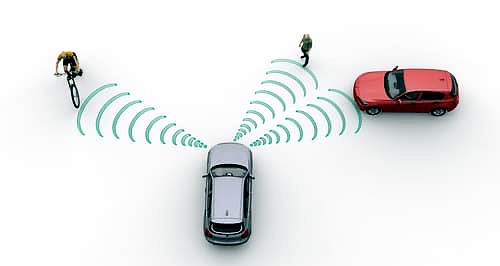News - General News - TechnologyIs simpler ADAS terminology needed?Safety technology acronyms cause confusion says group pushing for simple safety tech terms3 Aug 2022 AN ACRONYM avalanche is how the alphabet soup that is advanced driver assist system (ADAS) terminology has often been described… and it started decades ago, possibly with the anti-lock braking system now forever dubbed ABS.
To clarify, ADAS is any group of electronic technologies that assist drivers in driving and parking functions. Through a safe human-machine interface, ADAS are claimed to increase car and road safety.
ADAS use automated technology, such as sensors and cameras, to detect nearby obstacles or driver errors, and respond accordingly. It may also be capable of various levels of autonomous driving, depending on the features installed in the car.
However, as sophisticated in-car safety technology use mushrooms, ever-more acronyms have become the source of frustration and some confusion for drivers to the point where calls are being made to simplify ADAS terminology.
In the United States, these calls are coming from highly respected organisations including road safety groups, consumer groups, automotive engineers and automobile associations.
Though complaints about confusing technology terms would no doubt happen in Australia, probably directed at manufacturers or dealers, an orchestrated, one voice plea has yet to surface.
The US plea for standardised terminology came as a warning that the current variety of terms can confuse consumers and make it hard to understand a vehicle’s functions.
Led by various groups like the AAA (American Automobile Association), Consumer Reports, JD Power, the National Safety Council, PAVE (Pedestrian And Vehicle Education), and SAE (Society of Automotive Engineers) International, the coalition this week issued a set of updated and expanded terms that it believes will help clear up confusion, particularly as ADAS features become more common.
The six major categories on the list are: collision warning, collision intervention, driving control assistance, parking assistance, other driver assistance systems, and driver monitoring – a category added this year.
“ADAS features have become increasingly prevalent in new vehicles and have the potential to reduce traffic crashes and save thousands of lives each year,” the coalition said in a statement.
“However, the terminology used by car-makers to describe ADAS features varies widely, which can confuse consumers and make it difficult to understand the vehicle’s functions.”
The various terms appear to have the potential to confuse not only consumers but repairers and insurers as well.
The coalition drew particular attention to safety features that are “overstated or misrepresented with marketing language designed to reel in buyers,” leading drivers to over-rely on the features.
“Establishing common language for ADAS helps ensure drivers are fully aware these systems assist, not replace, an engaged driver,” the coalition said.
“The coalition is calling on automakers, regulators, safety organisations, journalists, and other stakeholders to adopt this recommended standard language in the near term to reduce driver confusion.
“The group is also asking for vital consumer education on the benefits, limitations, and capabilities of ADAS,” it said.
The Alliance for Automotive Innovation, which represents the great majority of U.S. car-makers, has issued the following statement in solidarity: “AAI supports the need for additional consumer education to understand the complexities of Advanced Driver Assistance Systems (ADAS).”
The coalition launched a program in 2019 designed to clear the confusion when it submitted an initial list of standardized names to the US Department of Transportation (DOT). The agency endorsed the list in 2020.
A generic nomenclature for ADAS has broad support within the US car-repair industry.
The coalition says that its recommended terms are “simple, specific, and based on system functionality”. It said the list is updated as new systems are introduced. The universal terms are not meant to replace OEM’s proprietary names but are intended to give consumers “transparent and consistent” information.
The suggestion has been made that said universal terms be used on window stickers, in owner’s manuals, and in other marketing materials for generic system functions.  Read more |
Click to shareGeneral News articlesResearch General News Motor industry news |

















Facebook Twitter Instagram